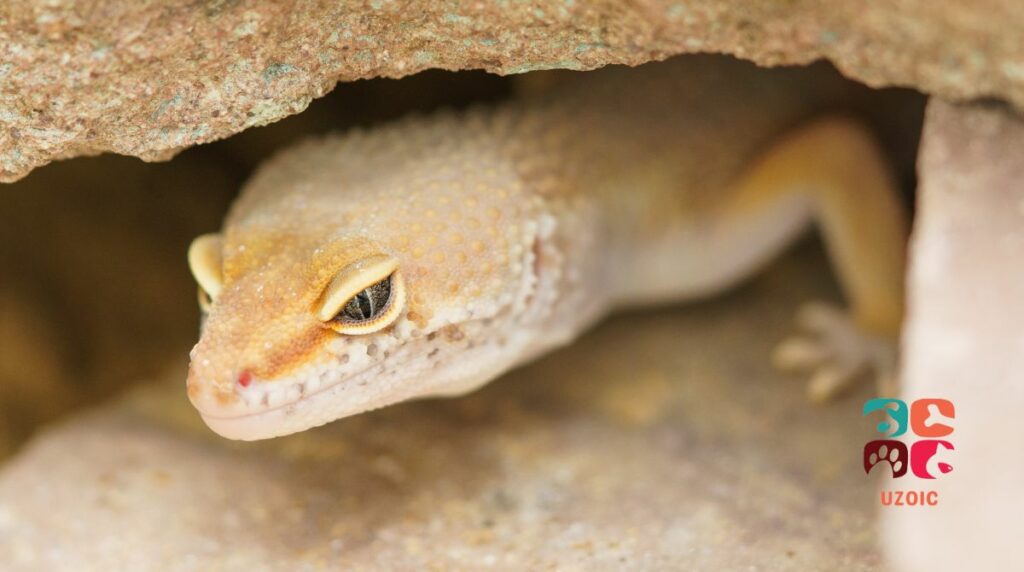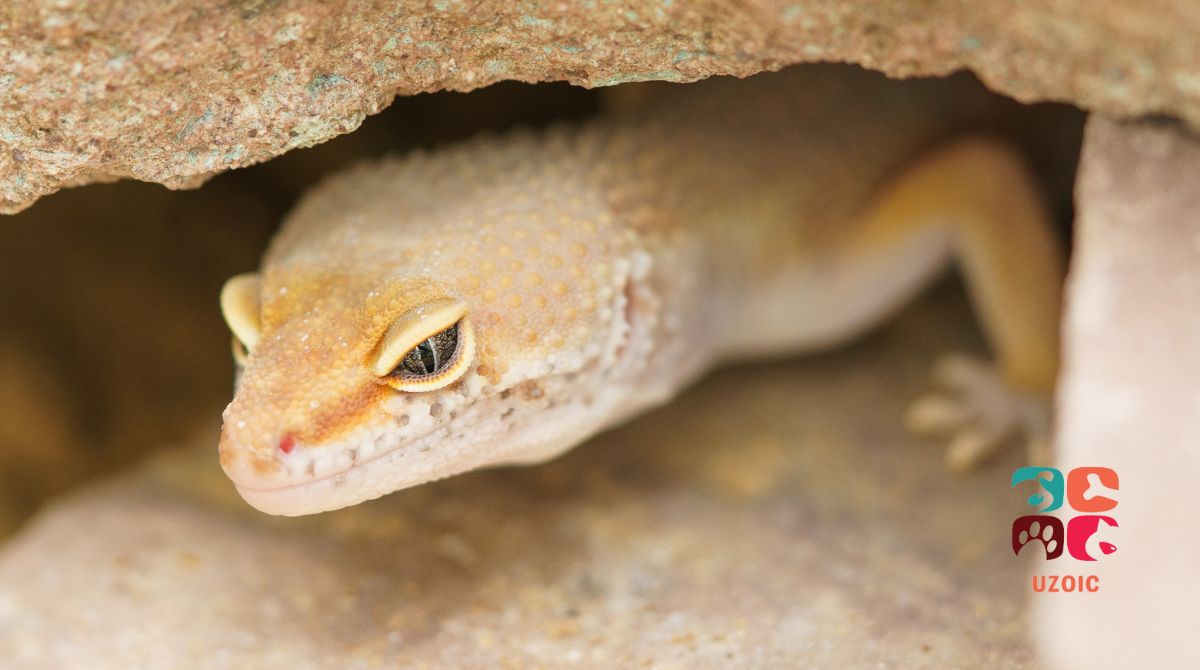Do you have a gecko as a pet? If so, you may have noticed that its color has changed recently. Gecko changing color is usually not a sign of concern. They can change color depending on their mood or the temperature of their environment. In this blog post, we will explore why geckos change color and what it means for their health. We will also provide tips on keeping your gecko healthy and happy!
If you’ve ever owned a gecko, you know that they come in various colors and patterns. Geckos usually change color in response to temperature, light, or environmental changes.
In some cases, color changes can also indicate stress or illness. If you notice that your gecko is changing color, it is important to take note of the other changes in their behavior. For example, if your gecko is becoming more aggressive or less active, this could be a sign of illness. Geckos can also change color when they are shedding their skin. If you see your gecko shedding skin, make sure to provide them with a warm, humid environment to shed properly.
Table of Contents
Why Is My Gecko Changing Color?

Geckos are well-known for their ability to change color. This ability is called Batesian mimicry, and it allows the gecko to camouflage itself against predators or its surroundings. It also uses this ability to hunt its prey. The gecko’s skin is covered in thousands of tiny pigment cells, called chromatophores which help it achieve this spectacular color change.
There are different types of chromatophores, each of which contains a different color. The most active chromatophore type will determine the gecko’s overall coloration. They are named after the pigments they contain. For example, if the yellow chromatophores (Xanthophores) are more active, the gecko will appear yellow. If the brown chromatophore (Melanophores) are more active, the gecko will appear brown and so on.
Here are some of the different color pigments found in a gecko:
- Yellow chromatophores are called Xanthophores [Gecko Appears Yellow]
- Red Or Orange chromatophores are called Erythrophores [Gecko Appears Red Or Orange]
- Dark Brown chromatophores are called Melanophores [Gecko Appears Brown or Dark Brown]
- Cyan chromatophores are called Cyanophores [Gecko Appears Cyan]
Geckos can also change their patterns by expanding or contracting their chromatophores.
When a gecko is threatened, the chromatophores expand, causing the skin to darken. In some gecko species, the chromatophores are also capable of reflecting light, giving the gecko a shimmering appearance. While this color-changing ability is primarily used as a form of self-defense, it can also be used to regulate body temperature and for hunting purposes. The gecko can control how much heat it absorbs from its environment by absorbing or reflecting light. As a result, color-changing geckos can survive in various climates and habitats.
What Does It Mean When Your Gecko Changes Colors?
There are a few different reasons why your gecko might change colors. If the temperature changes, you might notice that your gecko’s color gets lighter or darker. This is perfectly normal behavior and is nothing to be concerned about. Some geckos can also change their colors in response to stressors like loud noises or being handled too much. If you notice your gecko changing colors frequently, it might be time to reassess its living situation. Finally, color changes can sometimes be an indication of illness. If your gecko’s color change is accompanied by another symptom (loss of appetite, lethargy, etc.), it’s best to take them to the vet for a check-up.
There’s no need to worry if your gecko changes color in most cases. However, if you notice other changes in their behavior or health, it’s always best to consult a veterinarian. Geckos are amazing creatures, and their ability to change color is just one of the many things that make them so unique.
Why Is My Gecko Turning Pale?
If your gecko is turning pale, there could be several different reasons for this. They might be shedding. If so, they will turn pale or grey in color. Once they have shed their skin, their color will return to normal. Another possible cause is a lack of exposure to sufficient sunlight. Geckos rely on UV light to synthesize vitamin D in their body, and without adequate exposure to the sun, their health can suffer as a result.
In addition, a lack of dietary vitamins may also be contributing to your gecko’s pale coloration.
Additionally, your gecko’s pale coloring could be due to an underlying health problem, such as skin conditions or kidney issues.
Before making any assumptions about the cause of your gecko’s paleness, it is important to consult a veterinarian in order to get a thorough diagnosis and appropriate treatment plan. Whatever the reason may be, rest assured that you can help your gecko feel better by addressing the underlying issue and providing the supportive care it needs.
Why Is My Gecko Color Fading?
There are many possible reasons why your gecko’s color may be fading. One possible cause is inadequate nutrition, leading to the fading or loss of certain pigments in your pet’s skin and scales. Another factor contributing to the fading of your gecko’s hue is poor health or illness. In particular, underlying conditions such as metabolic disorders and chronic infection are often associated with dulling skin tones. Additionally, environmental factors such as excessive heat or exposure to ultraviolet radiation can also play a role in the changing appearance of your gecko’s coloration. Ultimately, if you are concerned about any changes in your gecko’s skin tone, it is best to consult a veterinarian for a detailed assessment and personalized care recommendations.
Do Geckos Change Color As They Grow?
Gecko’s colors start to fade as a natural part of aging. Some people claim that leopard geckos do not change color over the course of their life, while others believe that subtle shifts in hue can be observed as the lizard ages. But they do change colors as they grow. For example, crested geckos are born bright orange but usually lose the orange color as they turn a year old.
Conclusion
Geckos are beautiful creatures, and their color changes can be quite mesmerizing. However, in most cases, Gecko changing color is nothing to worry about. They have thousands of pigments that enable it to change color in response to their surroundings. They do this to camouflage or hide, alter their temperature retention, and for hunting. Rarely will you see a Gecko change colors for communication purposes, and they do not change colors too often (unlike chameleons). So if you notice your gecko changing color, take some time to observe their behavior and consult with a vet if you have any concerns. Your gecko will be healthy and happy for many years to come with the proper care!


